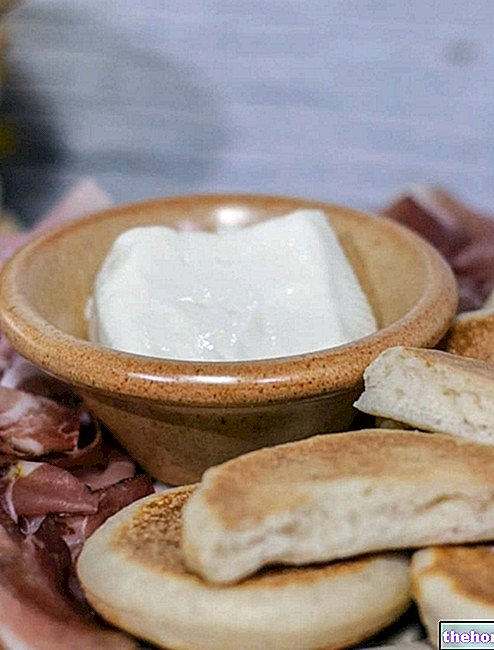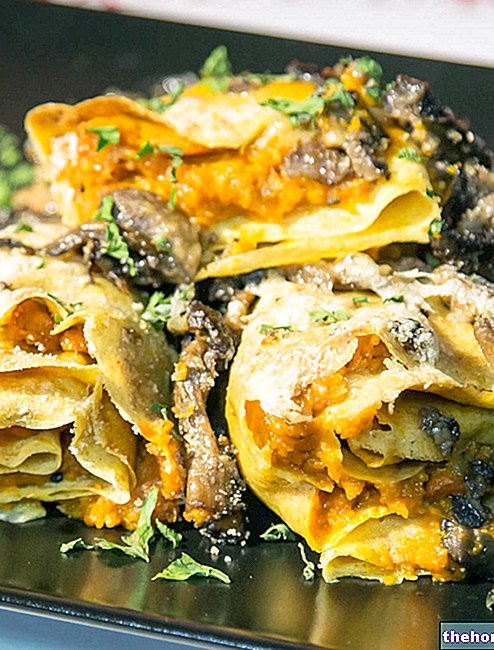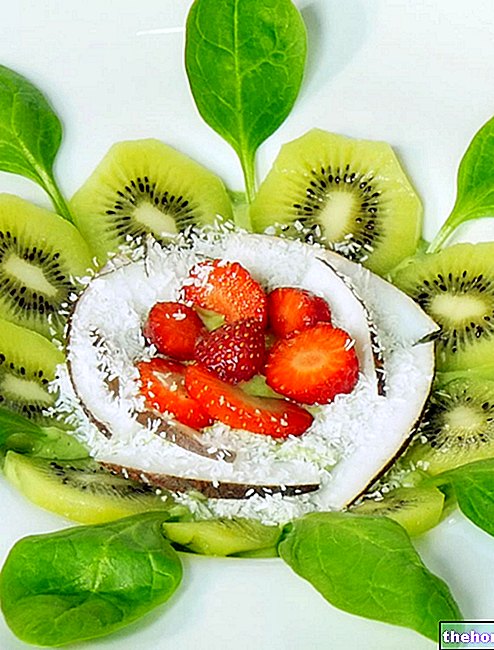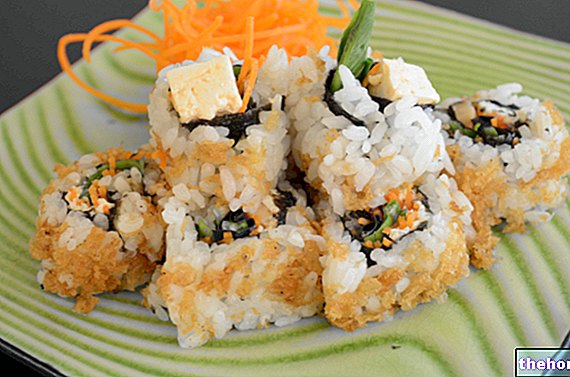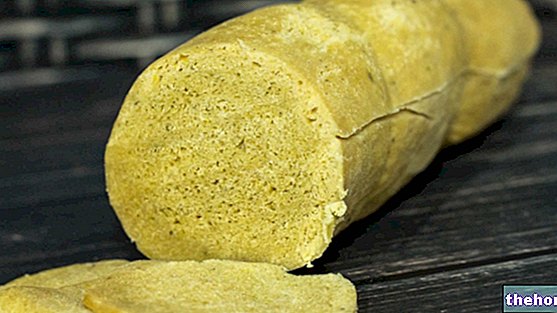Today we will see together how to prepare a special drink, much appreciated in South America: I'm talking about the infusion of yerba mate, also known as Paraguay tea. In the previous video we learned about the health characteristics of this diuretic, invigorating and stimulating plant, discovering which, together with tea, coffee and cocoa, constitutes one of the richest natural sources of caffeine. Today, however, we will learn together to prepare the maté extract using the special tool. The container designed to contain the chopped maté leaves is a cup that normally consists of a small empty and dried pumpkin. As an alternative to this special pumpkin container, you can use a wooden, glass or ceramic cup. The tool that cannot be missing to extract the active ingredients from the matè is called bombilla: it is a sort of special metal straw fitted, on one end, with a filter that prevents the dried leaves from being sucked. rate while taking the drink. Bombilla can be found in well-stocked supermarkets or, more easily, in ethnic and macrobiotic shops.
Video of the Recipe
Problems with playing the video? Reload the video from youtube.
Identity Card of the Recipe
-
Ingrediants
For 1 cup to drink with bombilla (10-20 servings)
- 20 g of dried yerba mate leaves "
Materials Needed
- Mug in pumpkin, wood, glass or ceramic
- Bombilla
- Small saucepan
Preparation
- Wash the cup of pumpkin (called “mate”) by rubbing some salt along the walls. Allow the container to dry completely. As an alternative to the vegetable container, you can use any cup, in glass, wood or ceramic. The bombilla (metal straw with filter) is essential.
- Fill the cup halfway with the dried yerba mate leaves. With the palm of one hand, cover the cup, turn it over and, with firm strokes, shake the dry mate leaves: in this way, the finest powders will settle on the top of the drug (intended as a medicinal plant) and on the palm of the hand, thus avoiding that they are dispersed in the drink (and will not end up in the mouth when you take the matè).
- Tilt the cup so that the maté leaves are concentrated on one side only.
- Gently place the cup, avoiding to level the leaves. Insert the bombilla in the empty half, taking care to direct the filter downwards, in the point where there are no mate leaves.
- Slowly pour cold water into the space without leaves: let it sit for a couple of minutes or until the water is completely absorbed by the drug.
Attention
In this first phase, the water must be cold: in this way, the properties of the matè will be preserved at their best.
It is recommended not to mix the maté leaves to prevent the thinnest and most dusty parts from getting into the bombilla filter.- Once the water has been completely absorbed, a pasty mixture will have formed. Avoiding mixing and moving the bombilla, pour again hot water at 80 ° C (but not boiling). Leave to infuse for 2 minutes.
Did you know that
In some countries, hot water is replaced with hot milk to obtain a drink that is richer in flavor!
To modulate the flavor of the maté, the leaves can be flavored with fresh mint, aniseed, chamomile or lemon or orange peel. Those who want a sweeter flavor can add sugar or honey.- Sucking the liquid from the straw (without mixing with the bombilla): according to the popular rite, the matè must be drunk all at once from the same cup, without sipping, and the cup must then be passed to a partner and filled again with hot water . The filling operation with hot water can be repeated from 10 to 20 times. Clearly, the first infusions are characterized by a stronger and more intense flavor because the active ingredients are more concentrated.
- At the end, the container should be washed with plain water and left to dry completely before using it again.
Alice's comment - PersonalCooker
Active ingredients and properties
The matè plant (Ilex paraguariensis) grows in South America - in particular in Paraguay - and is mainly used for its leaves, which contain active ingredients such as tannins, methylxanthines, triterpenes, caffeic acid derivatives (eg chlorogenic acid) and flavonoids. For the composition in terms of active substances, matè is included in the list of nerve substances, that is substances with tonic properties able to act centrally by improving psycho-physical efficiency. Together with tea, coffee and cocoa, matè constitutes a of the richest natural sources in terms of caffeine (improperly called matein): not surprisingly, due to the abundant presence of caffeine, matè is used in folk medicine as a diuretic (stimulates diuresis), invigorating (and for this it helps to fight fatigue, increasing physical energy), cardiotonic, stimulating (supports memory, improves attention and raises mood), anorectic and rebalancing. Due to the presence of these substances, Paraguayan tea has an astringent taste (given by the tannins) and slightly bitter. The taste of maté vaguely recalls that of green tea and, in the mouth, leaves an aftertaste of oak and tobacco. In addition to these uses, Paraguay tea is taken as a potential natural remedy for headaches, digestive problems, rheumatism and obesity.
Matè and the fat burning effect
Matè finds great success for its alleged "fat-burning" effect, exaggeratedly expanded by marketing campaigns: however, the amount of caffeine present is not so high to define matè as a real fat-burning food. On the other hand, it is also true that the slimming effect is somehow supported by the synergistic action of the chlorogenic acid and the phenols present in the phytocomplex. However, it should be emphasized that the studies on this matter are extremely limited and are limited to in vitro experimental models, pending actual demonstration. The caffeine content present in the maté leaves is around 1% (0.2-2%), but it must be emphasized that only a minimal part is extracted during the preparation of the drink. Approximately, the percentage of caffeine that is extracted during an infusion of matè leaves is equal to half of that present in the same quantity of coffee. However, it should be considered that those who wish to take matè for similar therapeutic purposes should prefer the dry extract of matè titrated in caffeine since herbal preparations such as herbal teas, infusions and decoctions do not allow to accurately determine the dose of active ingredients taken. .
How to take matè
In the form of an infusion, it is advisable to use a dose equal to one teaspoon of maté leaves, and leave them to infuse in a cup of boiling water for 5-10 minutes. In the form of tablets or capsules (dry extract of matè), we recommend a dose of 3 g, divided into 2 or 3 doses. In the traditional method, the mate extract is taken with the bombilla: it is a special cup of pumpkin (or wood) in which the mate leaves are left to infuse by adding hot water. The drink is drunk through a special straw called bombilla.
Warnings
It is not recommended to drink the infusion of matè in case of hypersensitivity to one or more components of the phytocomplex. The molecules extracted during the infusion can interact with some drugs, enhancing some side effects, such as: oral contraceptives, oral anticoagulants, benzodiazepines , iron supplements, aspirin, thyroid hormones, phenitorin, I-MAO. For this purpose, before taking matè for similar-therapeutic purposes, it is advisable to consult your doctor.The presence of caffeine can cause tachycardia. Unlike other caffeinated drugs, matè does not appear to have negative effects on insomnia. As a precaution, it is not recommended for use during pregnancy and breastfeeding.
Conclusions
Together we learned to sip matè according to the traditional method. Obviously, to appreciate the properties of the drink it is possible to leave the maté leaves to infuse in the best known method, that is by immersing a filter or a gauze sachet filled with one or two teaspoons of dried mate leaves in boiling water, leaving it to infuse for 3-5 minutes.Nutritional values and Health Comment on the recipe
Yerba Matè tea is a drink with almost no energy intake. It does not contain either cholesterol or dietary fiber.
It is widely used in the diet against overweight.
It has no contraindications for gluten and lactose intolerance.
It is also consumed by vegetarians and vegans.
The average portion is about 250ml.
The nutritional values on the side are left empty, as it is not possible to determine them exactly, although close to zero.

